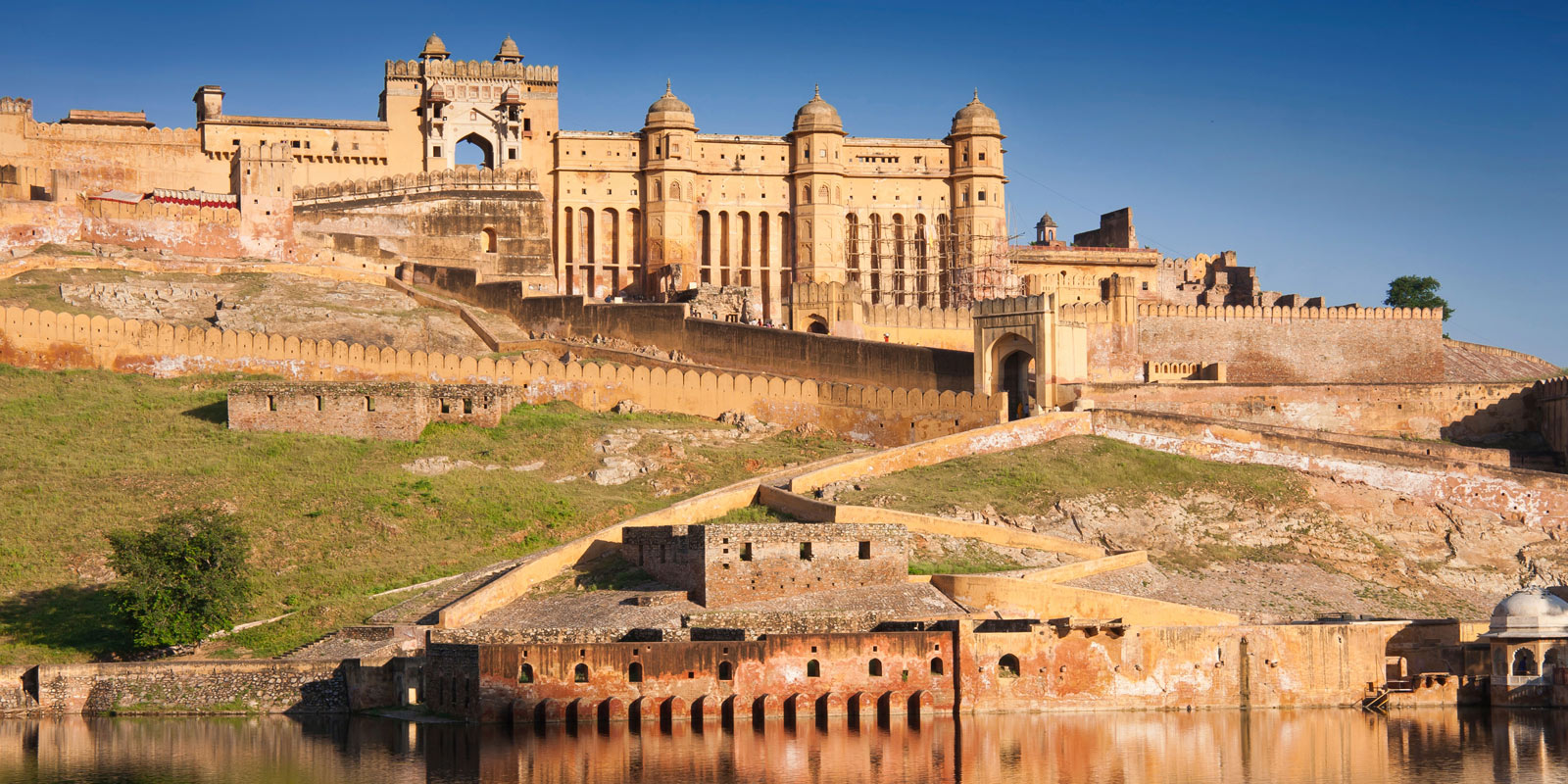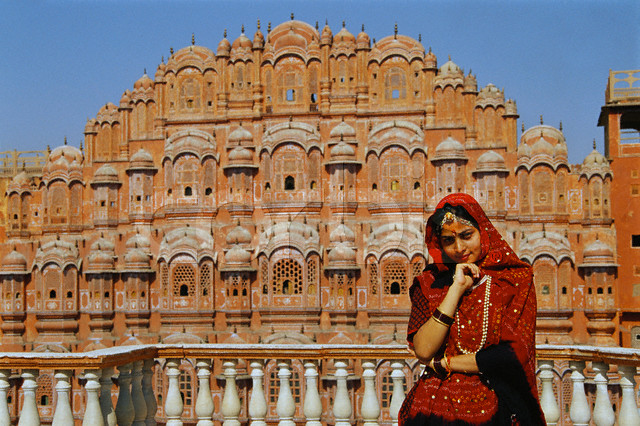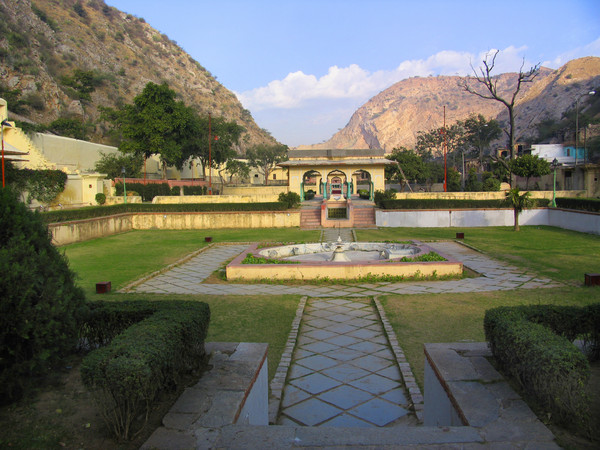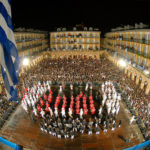Jaipur – Rajasthan, the flickering Pink City, was established by and named after Sawai Jai Singh II. It allures voyagers with a great show of its illustrious Rajput legacy in its forcing fortresses and amazing royal palaces.
Special reward is the warm accommodation of its kin and, obviously, a plenty of painstaking work to look for. Indeed, Jaipur is a heaven for all the ethnic sweethearts. The ethnic dresses one will discover here are difficult to go anyplace else. Additionally, every one of the dresses are sensibly valued. Sightseers can appreciate watching and taking part in different celebrations that Jaipur has – from the current Jaipur Literary celebration to the conventional Teej, Gangaur and Kite celebrations.
Summers are very hot in Jaipur, with maximum temperature reaching up to 45°C, while the winters are cool and ideal to plan for a holiday, with temperature dipping down to an average 8.3°.
Jaipur is very much associated via Air with Delhi, Kolkata, Mumbai, Ahmedabad, Jodhpur and Udaipur. Trains are accessible from the conditions of Delhi, Agra, Mumbai, Chennai, Bikaner, Jodhpur, Udaipur, Ahmedabad, Uttar Pradesh and Madhya Pradesh.
Tourist Places in Jaipur
Amer Fort
Prevalently known as Amber Fort, this wonderful post worked by Maharaja Man Singh delineates the imaginative Hindu engineering through its cobbled pathways and substantial passages. This four-level post, worked with red marbles and sandstone, comprises of the illustrious legacy of Diwan-e-Aam, Diwan-e-Khas, Sheesh Mahal, Sukh Niwas (water falls making wind hit to make a manufactured cool climate) and a sanctuary of Sila Devi. For generations, the royal families used to stay here, and it was secretly connected to the Jaigarh fort for emergency escapes during attacks.
Jaigarh Fort
This lovely creation by Maharaja Jai Singh, situated at Amber, Jaipur remains on the Cheel Ka Teela (Hill of Eagles), a projection of the Aravalli Hills. Found 400 meters above and comparative in structure with the well known Amber Fort, it was intended to secure the last mentioned. One can achieve the Amber Fort through the mystery underground section from Jaigarh Fort. This post is 3 km long and 1 km wide. It has the world’s biggest gun on wheels, called Jaivana; a couple royal residence edifices which served as the living arrangements of the regal families; a very much looked after garden; and an museum
City Palace
This massive fortress incorporates two more strongholds inside, and is situated on the north-east district of Jaipur. City Palace was the seat of the rulers. It has a gigantic cluster of structures, patios, sanctuaries and greenery enclosures. Its development was begun by Jai Singh taking after a flawless mix of Indian and European styles of engineering. The eminent framework design encases Mubarak Mahal, Chandra Mahal, Mukut Mahal, Palace of Maharani, Govind Temple and City Palace Museum. Chandra Mahal, one of the inner forts of City Palace, has a museum of its own and is still a residence of the royal family members.
Hawa Mahal
Hawa Mahal, or the Palace of Winds, worked by Maharaja Pratap Singh, is situated on the southern piece of Jaipur. This excellent five-storeyed building, intended to imitate the crown of Lord Krishna, resembles a honeycomb having around 1,000 little windows. These have latticework that energized cool air or specialist breeze to enter the royal residence, ventilating the entire zone amid the summers. The pink and red sandstone on the outside gives it an eminent look in the morning. The royal residence is a piece of the imperial City Palace reaching out till the Zenana or the councils of women.
Nahargarh Fort
Standing on the edge of the hills of Aravalli, the Nahargarh Fort gives a mesmerizing view of the pink city of Jaipur. Nahargarh literally means “abode of tigers”, evoking the royal legacy of Rajasthan. Maharaja Sawai Jai Singh, who founded Jaipur, built this fort. The fort has been part of important historical events: treaties of the Marathas were signed here, and it was the refuge of British women during the Sepoy Mutiny. The fort served as a hunting residence for the kings. The rooms of this beautiful fort are linked with long corridors.
Jantar Mantar
Worked by Maharaja Jai Singh, this observatory, formally pronounced as the national landmark, has a tremendous accumulation of cosmic instruments. Flawlessly made in marble and nearby stone, it is one of the biggest structures in the nation that is devoted to the investigation of divine bodies. It comprises of around 14 settled and centered gadgets that measure time, foresee shrouds, track stars, and find earth circles around the sun.
Jagat Shiromani Temple
This delightful temple was raised by the mother of King Jagat Singh, Shringar Devi Kankawat and the development took nine years to finish, from 1599 to 1608. The west-bound sanctuary is committed to the Hindu divine beings Radha and Krishna, and the building comprises of a gaduda chatri, marble torana, a vestibule, a square sactrum delegated with sikhara, a mandapa that lies on an enriched pitha took after by the jangha and vedibandha. The holy mandap has a few columns enriched with sidelong transepts and a vaulted roof with religious paintings.
Jal Mahal
Truly meant “Water Palace”, this wonderful engineering is arranged amidst a lake called the Sagar Lake, in the city of Jaipur. Both of these were revamped and in addition amplified by King Jai Singh in the eighteenth century. The lobbies inside the royal residence at the main floor are very much embellished, however can’t outperform the fragrant magnificence of the Chameli Bagh upstairs. The territory is encompassed by the Aravallis, different posts, sanctuaries, and hypnotizing regular magnificence. The lake has a well-established drainage system, the required depth for fishes to be alive, and five man-made islands for attracting migratory birds.
Albert Hall
It is one of the most established exhibition halls in Jaipur and in addition in India, and was worked by Sir Samuel Jacob in the nineteenth Century. It is known as the state’s exhibition hall for Rajasthan and is otherwise called the Government Central Museum. The wonderful building is situated in the Ram Niwas garden, and stands as the embodiment of the mixture of the Indo-Saracen engineering. Here. one can locate a rich gathering of various curios like floor coverings, canvases, stones, ivory, models made up of metal, gem works improved with hues and each thing that delineates the regal culture of Rajasthan.
Govind Devji Temple
Govind Devji Temple lies inside the City Palace. The Krishna divinity, said to be the facial picture of Lord Krishna, is initially from Vrindavan and was re-introduced here by Jai Singh II. The Lakshmi Narayan Temple lies near Moti Doongri Palace.
Sisodia Rani Palace
Other fascinating recognizes some separation away are Sisodia Rani Palace, recently remodeled with lovely greenhouses, and Gaitor, a commemoration to previous Maharajas. At Galtaji, there is a sun sanctuary.






What do you think?